| |
2019 Wheat Midge Forecast | |
| |
|
|
| |
|
|
| |

 |
Management tools for dealing with midge | Further information links | How the survey was done | Who helped .
.
| The wheat midge forecast for 2019 shows an overall low level of wheat midge across Alberta. There is very little risk of midge in the Peace Region, with the lowest level of midge found in the survey since the outbreak in 2013.
Individual fields or small pockets of wheat midge may still exist so it is important to remain vigilant. The midge population in central Alberta east of Edmonton is also lower. In both the Peace and central Alberta this may be partially due the use of midge tolerant wheat.
Wheat midge in both areas will remain a concern in individual fields, especially if there is late seeding and higher than average rainfall in the spring. Areas west and south of Edmonton have also seen individual fields with midge numbers at levels of concern as far south as Red Deer County.The population remains low in southern Alberta and the only midge found was associated with irrigated fields.
Over the past several years the field to field variation has been very considerable throughout the province. |
Individual fields throughout Alberta may have economic levels of midge.
PDF version of the wheat midge map
Each producer also needs to assess their risk based on indicators specific to their farm. Specifically, producers should pay attention to midge downgrading in their wheat samples and use this as an indication of midge risk in their fields.
This forecast is not intended to take the place of individual field monitoring. The forecast for Alberta shows areas of risk for midge damage in 2019. It is important to note that over such a wide range, populations in individual fields can be and often are highly variable. Producers should plan to monitor their fields when the midge adults are flying and their wheat is in the susceptible stage. In all areas of the province growers are urged to monitor their wheat fields from wheat head emergence to anthesis for the presence of midge adults. Regular field scouting on multiple nights in succession is important in understanding the population in a particular field..
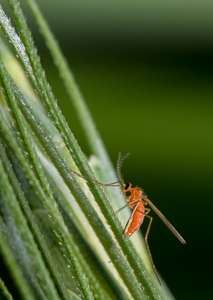 | 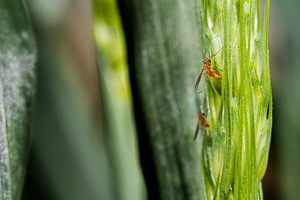 | Although a number of factors influence the overwintering survival of the midge, the survey and map provide a general picture of existing densities and the potential for infestation in 2017. Weather conditions, specifically temperature and moisture will ultimately determine the extent and timing of midge emergence during the growing season. Temperature and wind also play critical roles in egg laying activities of the female wheat midge. The level of damage from wheat midge is determined by the synchrony of wheat midge emergence and wheat and the number of wheat midge present. Look for the results of our wheat midge pheromone trapping in June and July to help track the emergence of adult midge. |
.
Parasitism
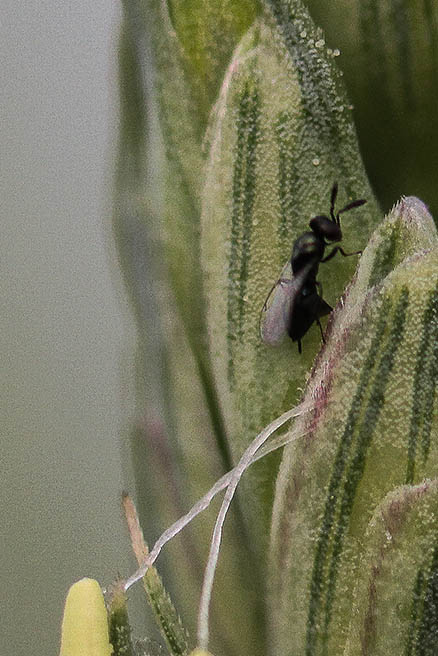
Macroglens penetrans | 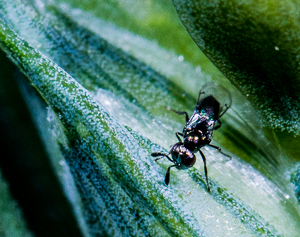 | Parasitism of midge larvae by a small wasp species (Macroglens penetrans) has been important in keeping wheat midge populations below the economic threshold in many areas. These beneficial wasps tend to thrive in warm, dry conditions. Parasite populations increase and decrease with changes in the midge population and are very important in moderating population levels in Alberta.
It is important to understand that once midge has established in an area it unlikely to ever completely disappear. Low lying and moist areas in a field provide a refuge, enabling the population to survive even when conditions are not favorable in the rest of the field. These low population levels, however, also help sustain a population of natural enemies. |
Management tools for dealing with midge
Important links
How the survey was done
The 2018 fall survey included wheat growing areas throughout Alberta. In total 315 samples were taken from 63 counties. The survey involves taking soil samples from wheat fields after harvest using a standard soil probe. Larval cocoons are washed out of the soil using a specialized series of screens. Larvae are counted, and then dissected to determine if they are parasitized. The midge density displayed on the forecast map is based on viable (live, non-parasitized) midge larvae.
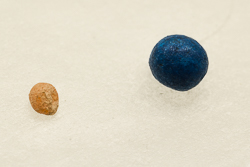
Wheat midge cocoon compared to canola seed | 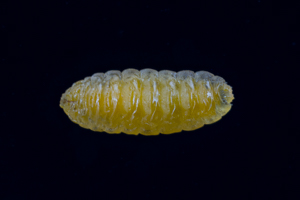
Wheat midge larva | 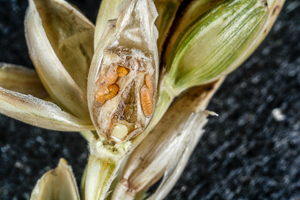
Wheat midge larvae on wheat kernel |
Who helped
The wheat midge survey was conducted by Alberta Agriculture and Forestry with assistance from:
| Battle River Research Group | Chinook Applied Research Association |  |
| Farming Smarter | Lakeland Applied Research Association |  |
| Mackenzie Applied Research Association | Northern Peace Applied Research Association |  |
| Smoky Applied Research and Demonstration Association | County of Two Hills |  |
| Parkland County | MD Wainwright |  |
| Mountain View County |  |  |
Our map was produced by Agriculture and Agri-Food Canada, Saskatoon SK. A special thank you to David Giffen for building the map.
Thank you to the many producers for permission to survey their fields. If you are interested in taking part in the Alberta 2019 wheat midge survey contact Shelley Barkley.
Updates of current conditions and wheat midge emergence will be available through the Ag-Info Centre (310 FARM) during the 2019 growing season and at the Alberta Insect Pest Monitoring Network.
Historical wheat midge forecast maps from 2006 - 2019
|
|
|
| |
|
|
| |
For more information about the content of this document, contact Scott Meers.
This document is maintained by Shelley Barkley.
This information published to the web on December 5, 2018.
|
|